Table of Contents
- The growing problem of scrap tires
- Easy ways to make a difference: recycling old tires
- Giving tires a second life: buying used tires
- 13 functional, creative, and innovative uses for recycled tires
- The importance and benefits of tire recycling
- The tire recycling process
- Tire-derived fuel: an alternative energy source
- The future of tire recycling
- Frequently Asked Questions
Did you know that billions of used tires end up in landfills or are burned every year, causing serious environmental and health hazards? Tire recycling is an effective solution to this growing problem. In this article, you’ll discover the benefits of recycling tires, creative uses for recycled materials, making a difference by participating in tire recycling programs—and contributing to a sustainable future.
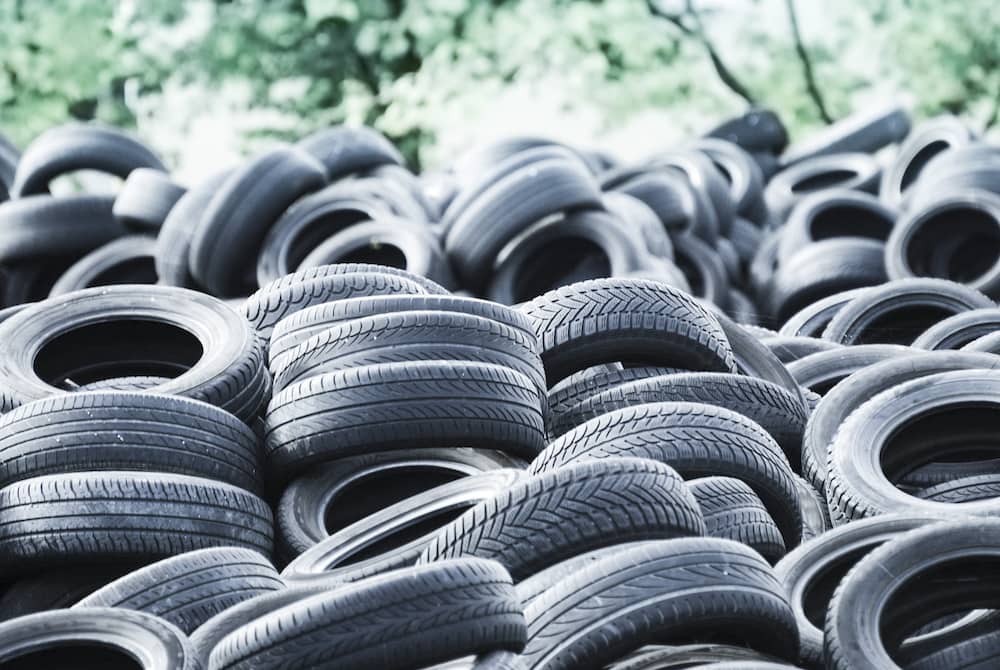
The growing problem of scrap tires
Discarded tires pose significant environmental and health risks, including:
- Non-biodegradability
- Energy inefficiency
- Taking up valuable space in landfills
- Releasing harmful gases
- Causing environmental disruption
- Becoming a breeding ground for insects and small animals
- Potentially resulting in health issues for humans.
Burning tires, a common practice, is a major source of environmental pollution, producing thick, black smoke and contaminating soil and water in the surrounding area. Toxins may also leach into groundwater, posing a substantial hazard. Proper tire disposal and recycling are crucial to mitigating these risks and ensuring a sustainable future.
Easy ways to make a difference: recycling old tires
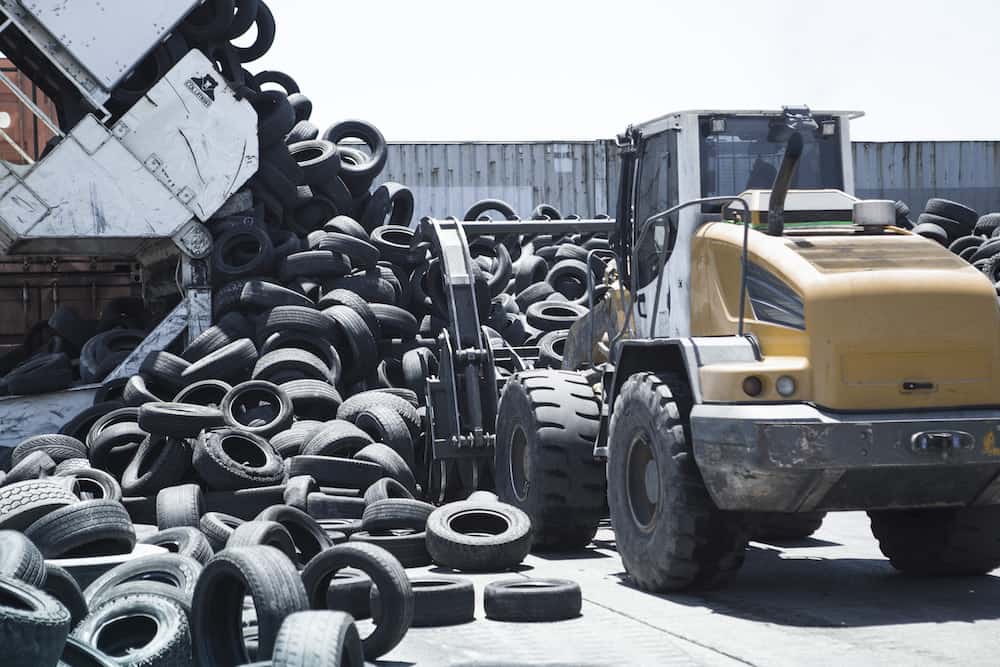
So, how can you contribute to tire recycling efforts? It’s easier than you might think. Begin by contacting local recycling facilities, tire retailers, or waste management authorities to inquire about tire recycling programs. Exchanging old tires for new ones at a garage is another acceptable option, as it is cost-effective and covers a range of expenses, including transportation, storage, management, and contracting with waste carriers. By participating in tire recycling, you’re not only helping to reduce the environmental and health risks associated with discarded tires but also supporting the creation of new products from recycled materials. It’s a win-win situation for both you and the environment.
Local recycling centers
To find a local recycling center that accepts used tires, you can:
- Contact tire retail stores
- Contact auto shops
- Contact dumps that accept used tires
- Look for recycling facilities that specialize in tire recycling, such as Liberty Tire Recycling
- Ask tire dealers for information on recycling centers

For more information and guidance, you can contact your local waste management department or visit websites such as 1800gotjunk.com, calrecycle.ca.gov, or genan.eu. The latter company operates the world’s largest tire recycling plant in Houston, Texas. It produces an impressive range of products out of old tires—from granulate to textile fibers. It’s important to follow the specific guidelines for proper disposal of tires provided by the recycling center you choose to work with. It will ensure that the tires are recycled in a responsible manner and help prevent the environmental and health risks associated with improper tire disposal.
Tire retailers and waste management authorities
Tire retailers and waste management authorities offer valuable information regarding tire recycling programs and drop-off locations for discarded tires. You can consult with them by accessing their websites, contacting their customer service lines, or visiting their premises. Tire retailers such as Discount Tire and Liberty Tire are known to recycle tires, making them a convenient option for disposing of your used tires. By partnering with tire retailers and waste management authorities, you can ensure that your discarded tires are recycled and repurposed in an environmentally responsible manner.
Giving tires a second life: buying used tires

Another way to contribute to tire recycling is by purchasing used tires. This can be a cost-effective and environmentally friendly option, as it helps reduce waste and promote sustainable consumption. Used tires can be obtained from tire retailers, local recycling centers, and waste management authorities. When acquiring used tires, inspecting them for wear and tear indications, such as cracks, bulges, and irregular tread wear, is essential. Additionally, ensure that they are adequately inflated and balanced and that the wheels are suitably aligned when installing used tires. By purchasing used tires, you’re not only saving money but also supporting tire recycling efforts and promoting a sustainable future.
Benefits of used tires
Purchasing pre-owned tires provides economic advantages, as they are generally more cost-effective than new tires. Moreover, buying used tires helps diminish waste, preserves tires away from landfills, and decreases the necessity for new tires to be produced. This encourages sustainable consumption and motivates people to reuse and recycle materials. In addition to the cost and environmental benefits, purchasing used tires contributes to tire recycling by:
- Encouraging individuals to reuse and recycle tires instead of discarding them
- Lessening the amount of waste in landfills
- Reducing the requirement for new tires to be manufactured.
13 functional, creative, and innovative uses for recycled tires

Apart from the traditional applications of recycled tires, they have numerous creative and innovative uses. Some examples include:
- Rubberized asphalt
- Color-coated granulate
- Playground turf
- Railroad ties
- Energy surcharge
- Flooring
- Garden planters
- Outdoor furniture
- Playground equipment
- Pellets
- Textile fibers like nylon
- Fiber steel
- Sculptures
By repurposing old tires, we can create new products and extend their lifespan, ultimately minimizing their impact on the environment.
Rubberized asphalt

Rubberized asphalt is a road paving material made by blending ground-up recycled tires with asphalt to produce a binder. It is a noise-reducing pavement material composed of regular asphalt mixed with crumb rubber from recycled tires. The innovative road surface offers numerous advantages, such as increased durability and resistance to cracking, compared to standard asphalt.
Construction materials

Recycled tires can also be repurposed as building materials for various construction projects, such as:
- Sound barriers
- Embankments
- Subgrade fill
- Bridge abutments
- Backfill for walls
Playground pavements and equipment
Beautiful, fun, safe, convenient, and environmentally friendly playgrounds? Most likely, they are made from what used to be tires! Look how amazing they are!
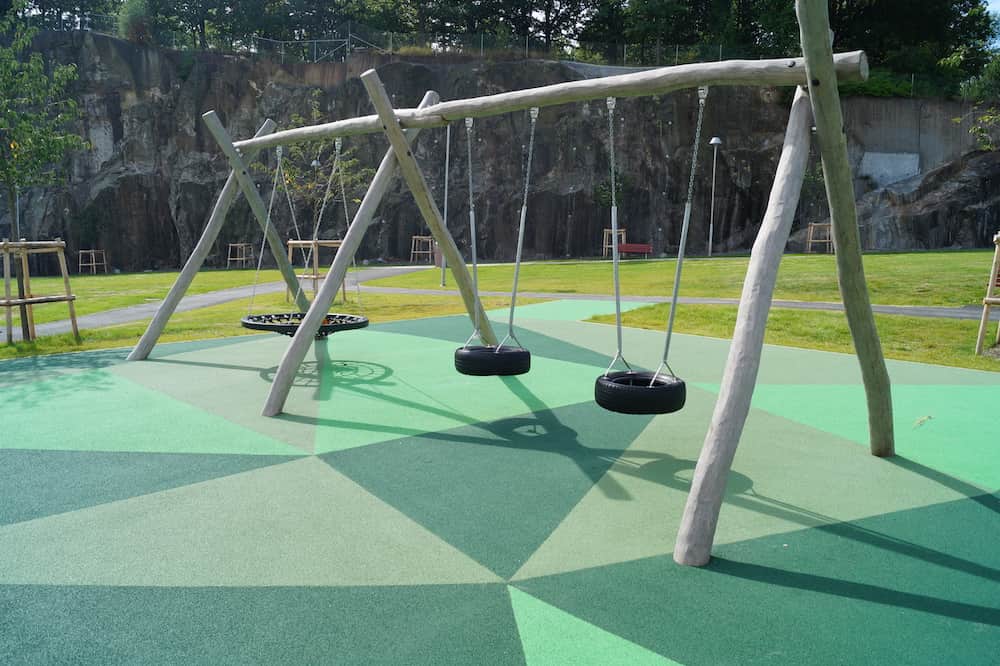
Furniture and decor
Transforming old tires into unique furniture pieces, decorative items, and artwork is another creative way to repurpose recycled tires. Furniture and decor made from recycled tires include:
- Coffee tables
- Chairs
- Bar tables
- Living room tables and chairs
- Sofas
- Round tables
How amazing that a good old tire can transform into a unique and custom handmade piece of art, furniture, or decoration!
The importance and benefits of tire recycling

The large volume, resilience, and potential environmental and health threats posed by used tires make them difficult to transform into reusable materials such as paper, plastic, and certain metals. The direct benefits of tire recycling are as follows:
- Conserving the landfill space
- Reducing environmental issues such as pollution and harm to animals
- Generating new products
- Providing employment and revenues for the government
- Creating manufacturing jobs
- Stimulating local economies
- Diminishing production costs
- Preventing diseases and environmental pollution
- Encouraging sustainable waste management
- Enhancing energy efficiency
- Generating income from recycled tire products.
The tire recycling process
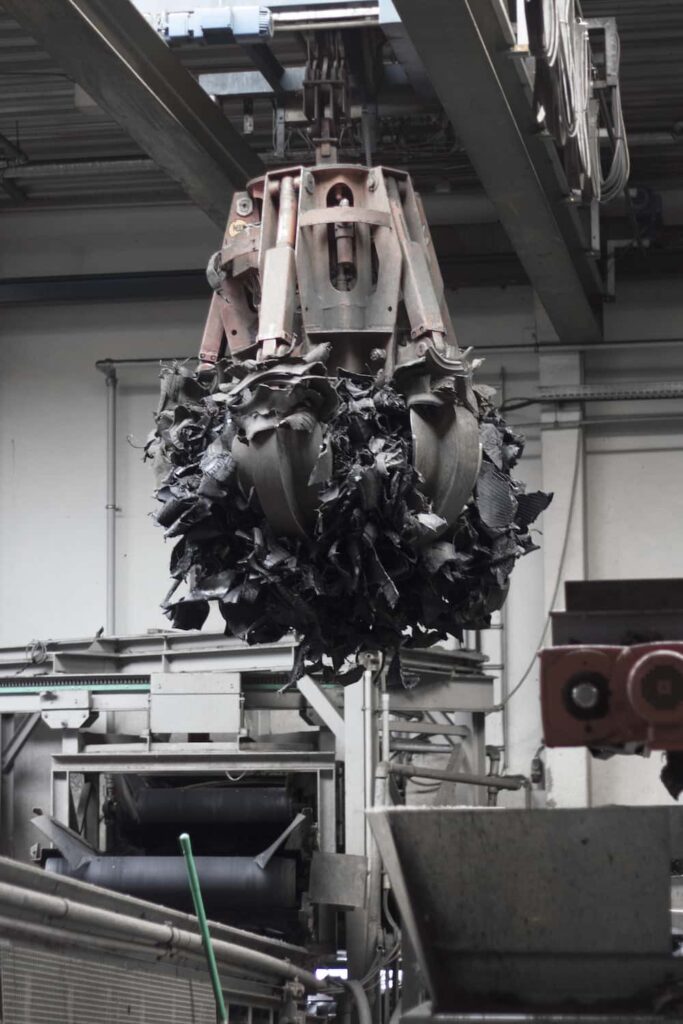
The tire recycling process involves several steps, including:
- Shredding and grinding the tires
- Separating the steel and fiber components
- Devulcanizing the rubber
- Producing crumb rubber to create a reusable material
1. Shredding and grinding

Tires are first broken down into smaller pieces through the process of shredding and grinding. There are two forms of tire processing: mechanical systems and cryogenic systems. Mechanical systems involve scraping the tires into smaller chips at ambient temperature, while cryogenic systems utilize liquid nitrogen to freeze scrap tires at low temperatures, reducing the rubber size into smaller chips. Both methods have their advantages and are utilized in the tire recycling process to extract valuable components from the tires. Breaking down the tires into smaller pieces makes it easier to separate the steel and fiber components and process the rubber into reusable materials.
2. Steel and fiber separation
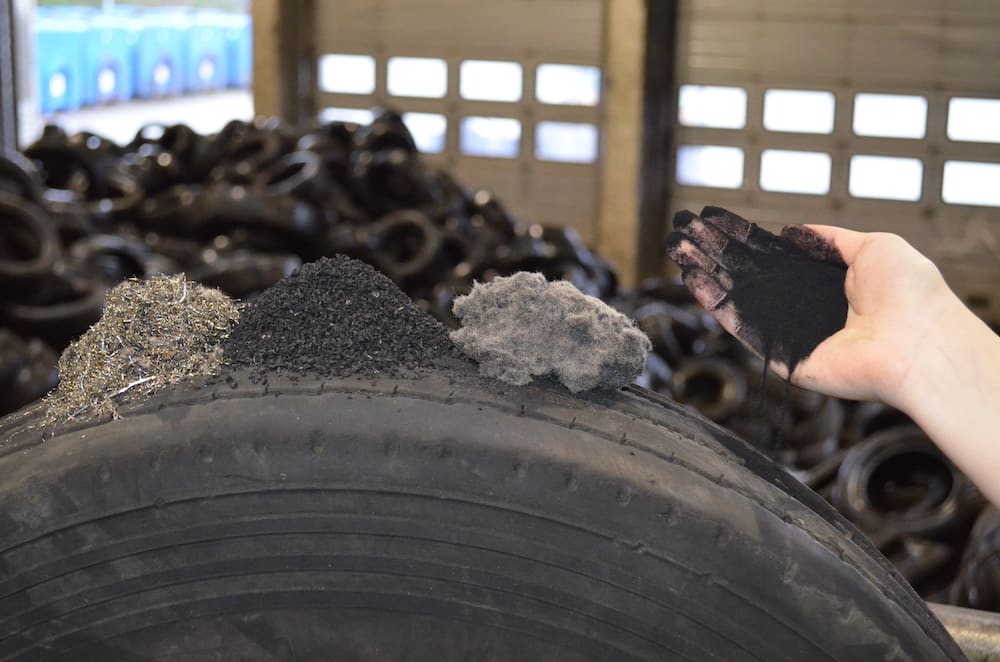
After the shredding and grinding process, the steel and fiber components are separated from the shredded tires for recycling in various industries. Magnets of considerable strength are employed to extract the steel wires present in the tires, and the residual tire materials, referred to as tire-derived fiber, are also segregated for further processing. This separation process is crucial to ensure that the recycled rubber is free from steel and fiber contaminants, allowing it to be further processed into useful materials and products. The separated steel and fiber components can also be recycled and repurposed in various industries.
3. Devulcanization
Devulcanization is the process of breaking down rubber compounds to their original state. This involves treating the tires with chemicals and creating fine powder and granules. Once the steel and fiber components have been removed from the shredded tires, the rubber compounds are broken down and processed into crumb rubber for use in various applications.
4. Crumb rubber production

Crumb rubber is a versatile and valuable material that can be used in numerous applications, such as rubberized asphalt, construction materials, and furniture.
Tire-derived fuel: an alternative energy source
Tire-derived fuel (TDF) is a fuel source created by the combustion of rubber chips, which are generated by primary tire shredders. TDF yields more energy output than coal and fewer harmful emissions, making it a sustainable option for generating electricity, concrete, and steel.The utilization of tires as a fuel source in specialized facilities creates a sustainable alternative to traditional energy sources and reduces the environmental impact of discarded tires.
The future of tire recycling

As the importance of tire recycling becomes more widely recognized, advancements and innovations are being made in tire recycling technology and applications. Some key developments include:
- A focus on adopting a more circular economy in the tire recycling industry, where tires are recycled to create new tires and other products
- The use of pyrolysis machinery—a promising tire recycling technology
- Tire manufacturers are increasingly prioritizing sustainability and using renewable and recycled materials in tire production.
Recycling old tires is an easy way to make a positive difference for the environment while creating new products. Tire retailers, waste management authorities, and specialized tire facilities provide accessible information on safe tire recycling practices. Acknowledge and use it wisely and play your part in the environmental protection of our beautiful planet!
Special thanks
The GoTire team thanks the company Genan—the largest recycler of end-of-life tires in the world, for providing images for this article. Photos are courtesy of ©genan
Frequently Asked Questions
How to make money with old used tires?
Offer pickup services for a price and make money with old used tires. Let local garages, tow truck companies, dealerships, car detailers, and other such places know that you can pick up their tires for a fee. The average is around $3 per tire.
How will you recycle old tires?
Recycle your old tires by dropping them off at a local tire scrap recycling center, or use Earth911 to locate one. You can also learn more about tire recycling at Earth911.com and find a local tire recycler using their Recycling Locator tool.
What are the advantages of tire recycling?
Tire recycling decreases waste in landfills, creates new products from recycled materials, and provides an alternative energy source, making it a beneficial practice. Recycling tires helps to reduce the amount of waste that ends up in landfills. This waste can take up valuable space and can be hazardous to the environment. By recycling tires, we can create new products from recycled materials.
What is the tire recycling process?
The tire recycling process involves shredding, grinding, separating, devulcanizing, and producing crumb rubber to create a reusable material.
What are some alternative uses for recycled tires?
Recycled tires can be used to create rubberized asphalt, furniture, decor, and other construction materials, providing environmentally-friendly alternatives to traditional materials. These materials can be used in a variety of applications, from paving roads to creating furniture and decor. The use of recycled tires helps reduce the amount of waste in landfills while also providing a cost-effective and sustainable alternative to traditional tires.
What are some advancements and innovations in tire recycling technology and applications?
There is a focus on adopting a more circular economy in the tire recycling industry, where tires are recycled to create new tires and other products. Additionally, pyrolysis machinery is a promising technology for tire recycling.
What are the available options for an individual to engage in tire recycling?
Individuals can dispose of their used tires at local recycling centers, tire retailers, or waste management authorities.
What are some alternative uses for recycled tires?
Recycled tires can be employed to create rubberized asphalt, construction materials, furniture, and decor.



